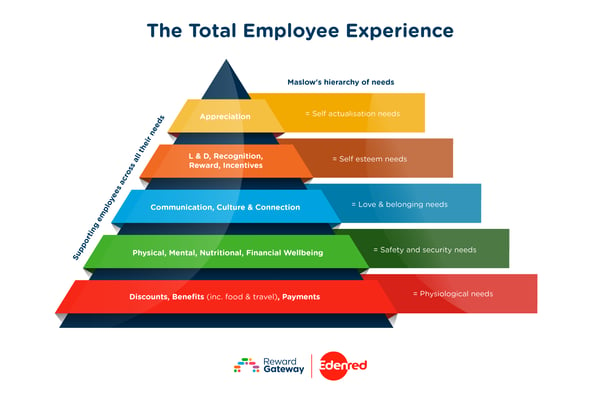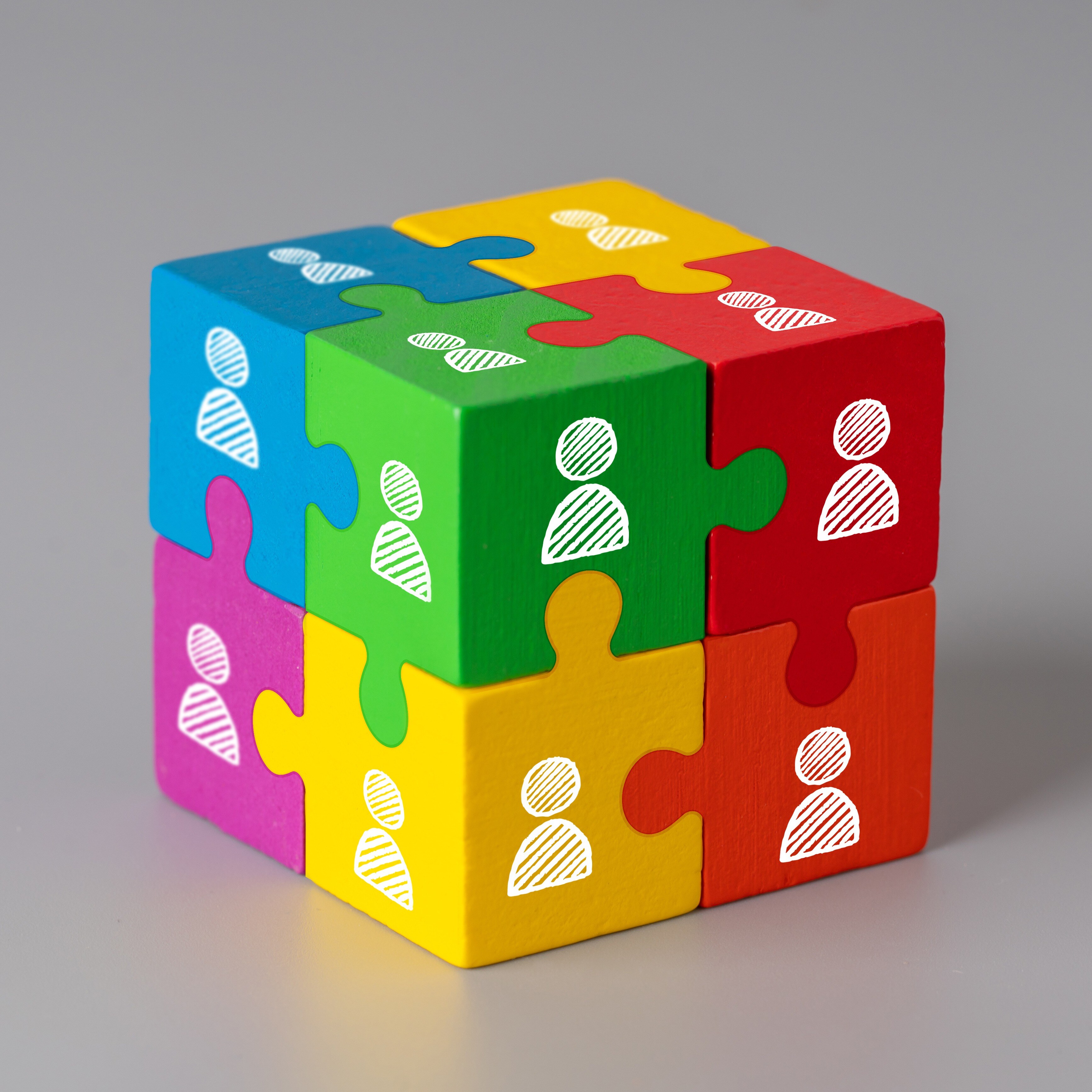Employees are looking for more support from their employer than ever in modern business. Boundaries, needs, desires, interests and motivations are ever-shifting This starts with physiological needs – the basics like shelter, food and clothing – and advances through safety and security, love and belonging, and self-esteem to reach self-actualisation. Only benefits packages that support all levels of employee needs are addressing the total employee experience.
But what does it mean to support an employee’s sense of self-actualisation?
Let’s walk through a modified version of Maslow’s hierarchy pyramid to get to the heart of it.

Climbing the total employee experience pyramid
This pyramid is the business lens through which we can view our benefits programs and employee experience. Maslow’s pyramid describes the way that human needs must be met. Physiological needs form the base of the pyramid because these needs are foundational. But while the layers indicate degrees of priority, that does not imply that the upper layers are optional to a fulfilling, healthy life.
Let’s break these levels down as they relate to your benefits package:
Level 1: Physiological needs
 An employee’s base salary is the core of meeting this need, but it doesn’t end there. Benefits like employee discounts help stretch each dollar even further, and food vouchers make it easier for employees to feed their families.
An employee’s base salary is the core of meeting this need, but it doesn’t end there. Benefits like employee discounts help stretch each dollar even further, and food vouchers make it easier for employees to feed their families.
These form the basic start to a comprehensive employee benefits program.
Level 2: Safety and security needs
Employees need to feel their safety and security are covered. Access to mental health support in an EAP program or with programs like Unmind allow employees to care for themselves and ultimately set them up to better focus on a job well done.
Level 3: Love and belonging needs
With those basic levels supported, employees start to look at how companies can differentiate themselves in regards to communication, culture and connection. Are employee onboarding and communications programmes such that I have the information I need to feel connected to leadership and do my job?
 Note: Our research has also found that companies that fall down on communication are more likely to fail employees across all the levels.
Note: Our research has also found that companies that fall down on communication are more likely to fail employees across all the levels.
Do you have a great EAP program, but no one knows about it? Then Level 2 isn’t going to be well taken care of.
Level 4: Self-esteem needs
With connection to the company, employees next look to whether they are making a difference. Is their self-esteem supported by the recognition and reward provided by managers, colleagues and the organisation as a whole? Are they given ways to support their growth and development? Does the company HAVE a program or does that program actually get used and make a meaningful difference?
Elevating People strategies to reach the top: Appreciation
Simply having the right list of benefits at all the right levels doesn’t guarantee success.
We have seen that some companies not only provide the right resources to companies, but ensure they are understood and used.
 These are some of the ways our clients build a total employee experience that results on genuine appreciation:
These are some of the ways our clients build a total employee experience that results on genuine appreciation:
- Space for a benefits hub within the platform so benefits are easy to find and use (and therefore save People Teams’ time!)
- Communication across the company that elevates the great work you are doing and puts it in front of employees everyday
- Providing metrics so benefits and programs can be tracked and usage can be built up over time
Integrating these strategies will provide employees what they need and want, will cultivate a genuine culture of appreciation, emphasising the value of each employee beyond their professional contributions. This approach nurtures a more connected, supportive, and positive workplace environment, where everyone feels valued for who they are, contributing to overall engagement and wellbeing.
Learn how Reward Gateway can help you boost your organisation’s benefits program to meet the total employee experience by scheduling a demo with one of our friendly employee experience experts.

%20(1).jpeg) Alexandra Powell
Alexandra Powell



